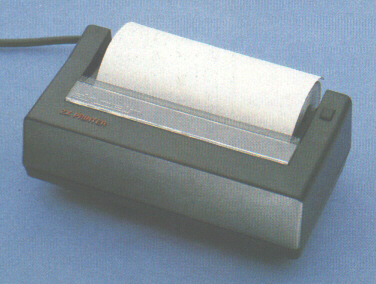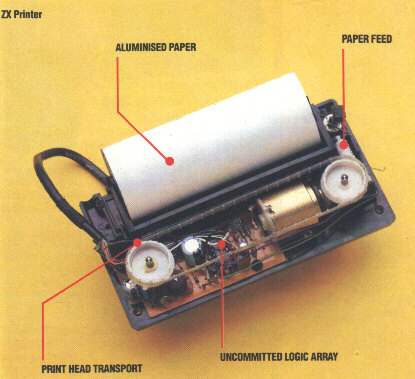Hard Copy
Nearly all computer owners need to produce a hard copy print-out at one time or another. For business purposes an expensive letter-quality printer such as a daisy wheel is almost essential, but for the average home computer owner, who usually wants nothing more than a program listing, there are cheaper alternatives. The means to produce a printed copy of a program listing or piece of text is high among any computer owner’s priorities. Unfortunately, the cost of a good dot matrix printer may be two or three times the original price of the computer, while a daisy wheel device is certainly out of reach. Low-cost alternatives do exist, however, in the form of non-impact printers. These printers take their generic name from the fact that they don’t hammer needles or shaped pieces of metal through a ribbon to leave there mark on a piece of paper. The original non-impact printers were developed for cash registers and portable terminals such as the famous Texas Silent 700 series and used heat to develop an image on special, treated paper. Just as an impact matrix printer has a vertical column of needles in a head that moves horizontally across the page, the thermal printer has a column of heating elements. As each dot is required, the corresponding element is rapidly heated and the minute area of paper under the element changes colour. The contrast between the dotted image thus produced and the unmarked background is good enough for most amateur uses but the letters hardly rate as high-quality. Indeed, the most endearing feature about these devices is their almost total silence of operation. Apart from the Texas Instruments terminals, thermal printers were also adopted by Apple, which produced a small printer for its computer called the Silentype, and Mattel, which offers a similar unit for use with its Aquarius home computer. In contrast, the mechanism used in the electrostatic printer is moderately noisy and, apart from an early Centronics example called the Microprinter P1, it failed to gain general acceptance - until, that is, Sir Clive Sinclair adopted the system for the ZX Printer, which has sold in huge numbers as a dedicated peripheral for the ZX81 and ZX Spectrum. The principle of electrostatic printers is that a single-wire printing head is dragged across specially coated paper. For every dot needed to build up a character, a spark is generated by the printer, which burns away the thin metallic coating to reveal the black backing paper. Sinclair improved the system by using two heads on a continuous belt, but it still takes eight passes of a head to create each row of characters. Fortunately, the ZX Printer has to print only 32 characters on each row so the speed is acceptable.
The main disadvantage of both types of printer is that they use special paper. Such materials tend to be expensive and are available only in rolls, which makes storage difficult With the thermal printer it is essential to buy the correct grade of paper; otherwise the image will not develop properly. It also fades with time or exposure to heat. Electrostatic paper is even more delicate and if handled with damp or sweaty hands the image will blur and fade away as the coating dissolves. In both cases the best way to ensure a good, long lasting image is to take a photocopy. Surprisingly, the silver-coloured paper photocopies very well. These drawbacks notwithstanding, both types of printer offer the makers of the smaller home computer a way to provide some form of printing system for their machines that they would otherwise have to do without. The dot matrix method of printing allows direct copies to be made of the screen display, so both text and graphics can be produced at no extra cost, and the relatively low quality of the final image doesn’t really matter to the user. Recently, however, the dominance of these printing systems has been challenged by the four-colour pen plotters supplied by Tandy and Sharp. These can produce excellent, fully formed character sets and superb line graphics on ordinary roll paper for roughly the same cost as the thermal or electrostatic devices. As printing technology develops, it is still the non-impact device with its simple mechanism and limited facilities that fills the printing requirements of the low-cost home computer market. |
| [ Main Page ] [ Features ] |

